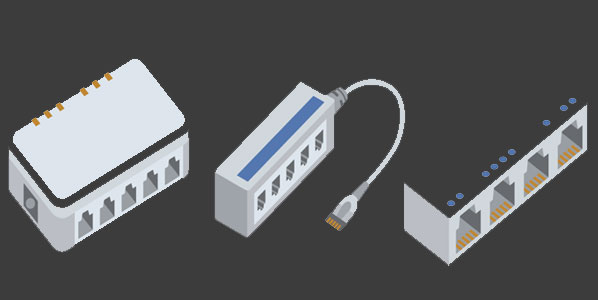Phone Line installation | As the electrician is permitted to do telephone cabling of houses and other locations, the apprentice should be familiar with the types of wires used. There are different types of telephone cabling used in the new phone line installation.
Table of Contents
Telephone Cabling Installation – Phone Line installation
Station Wire
Station wire is designed for inside-outside use in station installations from the station protector to the telephone terminal block. It is designated SW with individual conductors and station wire twisted (SWT) with paired conductors that are twisted and then encased in polyvinyl chloride (PVC).
The PVC jacket is tough, and weather and flame-resistant. It provides protection when exposed to weather conditions and inside cleaning products such as detergents, waxes, oils, and most solvents. The wire is
installed with a stapling gun.
Insulated conductors are twisted together in two-, three- or four-conductor configurations and then jacketed. The PVC jacketed wire is available in beige or olive. It is packaged in 500-foot rolls or coils in a box.
PIC Building Systems inside Cabling
Positive identification cables (PIC) are designed for inside use. The conductor is solid copper rated at 24 AWG. The main purpose for this type of semi rigid polyvinyl cable is for use in private branch exchanges (PBX) and private attended branch exchanges (PABX) systems.
 |
| Phone Line installation |
The conductor insulation is color-coded with the telephone industry’s standard colors. Each insulated conductor is band-stripped at approximately 1-inch intervals with the color of the mating insulated conductor of the assembled pair. The individual conductors are mated in accordance with PI band stripes and twisted together into pairs. The pairs are assembled into a cylindrical core or into units and then formed into a core.
If the cable contains more than 25 pairs, the pairs are molded into a 25-pair color group, each color group bound with a single color binder. (100-pair cable is available in either the standard makeup of four 25-pair units or five 20-pair units.) The jacket is flame-retardant and abrasion-resistant PVC. Jackets are available in olive or beige.
Station Wire Plenum, Individual Conductors
This type of wire is designed for use in air ducts and plenums without metal conduit in PBX and PABX, key system, and telephone instrument communications systems. (Key telephone systems [KTS], which can have 50 or more associated telephones, are similar to PBX systems.
KTS has mostly outside calls. It is little used for internal calls. A PBX has a larger share of internal calls.) SWP is used in installations that require less station wiring or shorter direct runs, and it reduces station installation costs. It has a fully annealed, solid bare copper conductor that is 22 AWG in size. Insulation is a fluoropolymer resin.
A two-conductor station wire has one conductor insulated with red and the other with green. A three-conductor wire has the third conductor insulated with yellow; in a four-conductor wire; the fourth conductor is black. The four-wire quad is made by spiraling the four wires together into the star quad configuration.
The red and green conductors are placed diagonally across from each other to form pair 1, and the yellow and black conductors form pair 2. The insulated conductors are twisted in a two-, three- or four-conductor configuration and then jacketed. The jacket is made of fluoropolymer resin and is uncolored or olive in color. It is packaged in 500-foot coils in cartons. The cartons have a knock-out center to permit dispensing the wire directly from the carton.
Station Wire Twisted Plenum, Paired Conductors
This station wire is designed for use in air ducts and plenums without conduit in PBX, PABX, key system, and telephone instrument communication systems. It too is made of 22 AWG fully annealed, solid bare copper wire.
It varies slightly from the individual-conductors cable inasmuch as it has a color code for the four pairs:
1. Pair 1 is formed by a white and blue (tip) and a blue (ring) wire.
2. Pair 2 by a white and orange (tip) and an orange (ring) wire.
3. Pair 3 by a white and green (tip) and a green (ring) wire.
4. Pair 4 by a white and brown (tip) and a brown (ring) wire.
The tip (white) conductor insulation is band-stripped with the color of its male to provide positive identification of each conductor.
 |
| RJ45 – Connectors – Telephone Cabling Installation |
ICPIP Pair Conductors
The individual conductors are mated in accordance with positive identification band stripes and then twisted together into pairs. The pairs are assembled into a cylindrical core or into units and then formed into a core. If the cable contains more than 25 pairs, the pairs are coded into a 25-pair color group, each color group is bound with a unique color binder. The 100-pair cable is available in either the standard makeup of four 25-pair units or five 20-pair units.
Communications Wiring | Telephone Cabling
The electrician is generally expected to be able to install communications cable in a new building or in retrofits. Keeping the cable from damage and locating its pathway is important to maintaining the integrity of the cable and the signals it handles.
Termination assignments for pairs of wire in the cable are set by various standards adapted by the telecommunications industry. Those shown here are typical of pin/pair assignments. Most modern buildings and retrofitted older buildings have a need for communication wiring that is terminated with various jacks and plugs. These jacks and plugs have various pin/pair assignments for terminating the wire according to the standard being used to guide the pin connections.
The following illustrations indicate which colors are installed where in these jacks and plugs. Commercial Building Telecommunications Cable Standard ANSI/TIA/EIA-568-A was produced by the Telecommunications Industry Association (TIA).
A modular plug is usually clear plastic and used on the end of patch electrician. The connector uses insulation displacement to make contact with the conductors in the wire. No soldering and no twist nuts or twist-and-tape is required. The wire is crimped on the end of the cable, from which the jacket has been removed, but the insulation on the conductors is left intact.
The modular plug can come in many varieties from a 4- to a 10-position handset. The plug used for residential telephones is the 6-position, 4 or 6 conductor known in the trade as RJ11. The plug used for category 5 patch cables is the 8-position 8 conductor known as RJ45.
A patch panel is a rack-mount panel that is used in telecommunications closets as a point of cross connect. Typically, patch panels with the 110-style (insulation displacement) have connections on the back of the panel and modular jacks on the front. Specific conductors on the cable are assigned to specific pins on the modular jack, 110 connectors, and TELCO connectors.
Horizontal telephone cabling, also known as station telephone cabling, consists of individual cables that run from the workstation outlets or wall plates back to the horizontal cross-connect or patch panel in the telecommunications closet. Keep in mind that if horizontal cabling is improperly installed or mistreated, there is the possibility of cross talk being produced by the untwisted cable.
Cross talk occurs when an induced signal from a nearby or parallel transmitting pair imposes an unwanted conversation on the nearby circuit. Be careful with the cable tie. Do not pull the tie too tight, or it will crush the cable, deforming the pair twists and changing the performance characteristics of the cable. If pairs are untwisted too much at the termination point (not more than 1/2 inch), then attenuation and cross-talk performance characteristics of the cable are affected.



